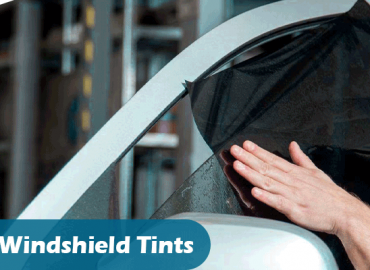Energy-efficient window tints are money-saving, energy saving and adds to the overall level of comfort by incorporating energy efficiency.
How commercial window tints are energy saving
Tinting films works in diminishing the sun’s ultraviolet rays. It increases fade reduction; however, it absorbs energy areas. It works to reduce UV radiations that exist throughout the atmosphere. Remember! The results are based on window film types that are installed.
A minor temperature change generates up to 25% energy saving as it reduces heat and sunlight using eco-friendly materials. It may take power to adequately eliminate excessive heat from the building through an air conditioning system.
Window tinting films help ease air conditioning load during peak summer times enough to allow the users to install the inexpensive system. Window film reduces the uncomfortable glare and heat while enhancing energy savings. It adds to the overall comfort level of the building.
The science
The movement or transfer of warmth from a high temperature to a less warm area is also termed “heat transfer.” Heat consistently flows from hot to cold air. If there is a slight difference between the temperatures, the heat will not move from one place to another.
There are three temperature or warmth transfer forms.
- Convection
- Conduction
- Radiation
Radiation is the most important form of heat transfer, due to which it transmits infrared waves. The sun’s heat penetrates a window and is transferred or transmitted through infrared waves. Radiant energy is converted into heat once it is a matter of contact with people or objects. Window tinting films work successfully to disrupt energy transfer. It can reflect it back and away from the window. Window tinting keeps the interior content comfortable and relaxed.
Solar energy transmission
Solar energy combines UV, near-infrared, and visible light that pass-through window glass. It is absorbed the total solar energy amount while reflecting some of the percentage of it.
When you install window tinting film on the internal side of the window, the key proportions can change dramatically. It increases heat reflection and energy absorption. The process is directly related to the amount of reduction of solar warmth and its transmission,
Benefits of commercial window tinting
In addition to positive impact, tinting films have energy-saving environmental effects. Window tints enhance the building’s comfort by reducing temperature and bothersome glare or dangerous UV radiation. Generally, it reduces skin diseases like cancer.
Reducing glaze helps improve efficiency
When we talk about the energy efficiency of commercial buildings, the glaze is the most significant contributor. Around 34% of the cooling and heating energy requirement is because of windows.
So, what can you do?
Well, the first opinion is replacing the window. But replacing windows is expensive, disrupting operations and landfill waste. Window tinting reduces the glaze in the windows.
Sun control
Tinting films have unique technologies that help in protecting property and people from seismic, smash, bomb blast, and windstorm.
Solar window tints are multi-layer made up of thin sheets of clear polyester. Window tints are installed on the interior or exterior of the window using a pressure-sensitive and energy adhesive. The transparency level ranges from clear and highly reflective and dark tints.
Spectrally selective
Some window tinting films, like 3 M’s spectrally heat gain reduction films, provide up to 66% reduction in light transmission. Infrared-rejecting tints are designed to reject maximum light and heat amount without affecting the glass’s appearance. These films can block 97% of infrared sun rays.
Low emissivity
Solar window tinting films have low emissivity. When these tints are applied to single-pane glass, these films reduce heat loss in winters by up to 40%, which rejects up to 47% of total solar energy in summers. It improves glaze performance to dual pane level.
Effects on ROI
Studies have shown that the number of window tinting films affects a company’s return on investment, especially when you install these films, especially to the west, south, or east-facing. The significant benefits of these films are reflectiveness and glare blockage. Some of the tinting films have energy-saving properties in addition to maintaining a more substantial amount of VLT or visible light transmission. No matter the style, there is always one that suits your requirements.
A solution to improve efficiency
The federal government recommends window tints to improve efficiency. According to the estimates, 34% of the heat and cold effect in your commercial building is because of the window. However, replacing window tinting is not a good idea; window tinting films are the best options. It improves the installation cost and acts like an insulation panel.
Controls climate
Window tinting films help keep the cool, conditioned air during hot days and warmth during cold weather. It also reduces the hot and cold spots in the building, enhancing the overall comfort level.
Conclusion
Commercial window tinting can be an excellent addition to your building. When it is a matter of window film installation and complete knowledge about it, Auto Boss Vaughan offers a variety of tinting applications, including commercial and automotive window tinting installation.
FAQs
Does 70% window tinting reduce heat?
70% window tints help you in reducing temperature and glare. It improves the building’s outlook and environment in the interior.
Is window film helpful in energy efficiency?
Window tinting film may block up to 66% of heat in hot weather. It allows the air conditioning system to run less frequently. Energy-saving tinting minimizes the overall costs by around 40%.
How much window tinting film saves energy?
The tints help keep warm air inside the building when switching the cooling system to heating. It depends on the window tinting types; you may minimize heat gain in the building. You may save cooling costs up to 50%.
Does commercial window tinting reduce heat?
Yes! Tinted windows reduce heat by blocking UV rays and lowering the building’s temperature.




